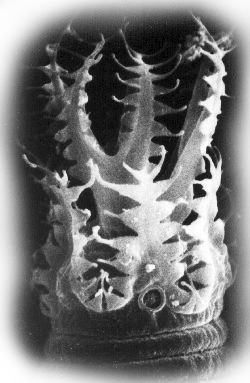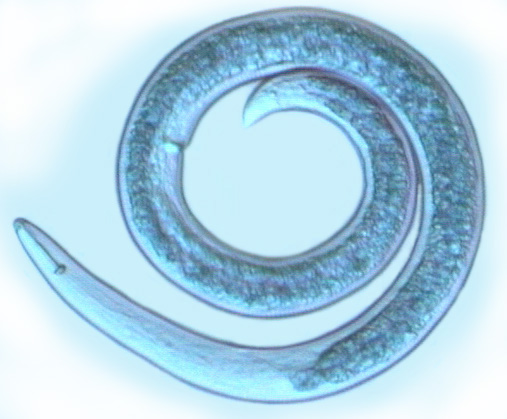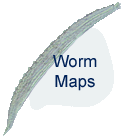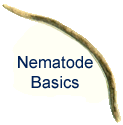 |
Nematodes? |
 |
 |
 |
 |




 |
Nematodes are the most numerous multicellular
animals on earth. A
handful of soil will contain thousands of the microscopic worms, many
of them parasites of insects, plants or animals. Free-living species are
abundant, including nematodes that feed on bacteria, fungi, and other nematodes,
yet the vast majority of species encountered are poorly understood biologically.
There are nearly 20,000 described species classified in the
phylum Nemata .
Nematodes are structurally simple organisms. Adult nematodes are comprised of approximately 1,000 somatic cells, and potentially hundreds of cells associated with the reproductive system . Nematodes have been characterized as a tube within a tube ; referring to the alimentary canal which extends from the mouth on the anterior end, to the anus located near the tail. Nematodes possess digestive, nervous, excretory, and reproductive systems, but lack a discrete circulatory or respiratory system. In size they range from 0.3 mm to over 8 meters. |
|